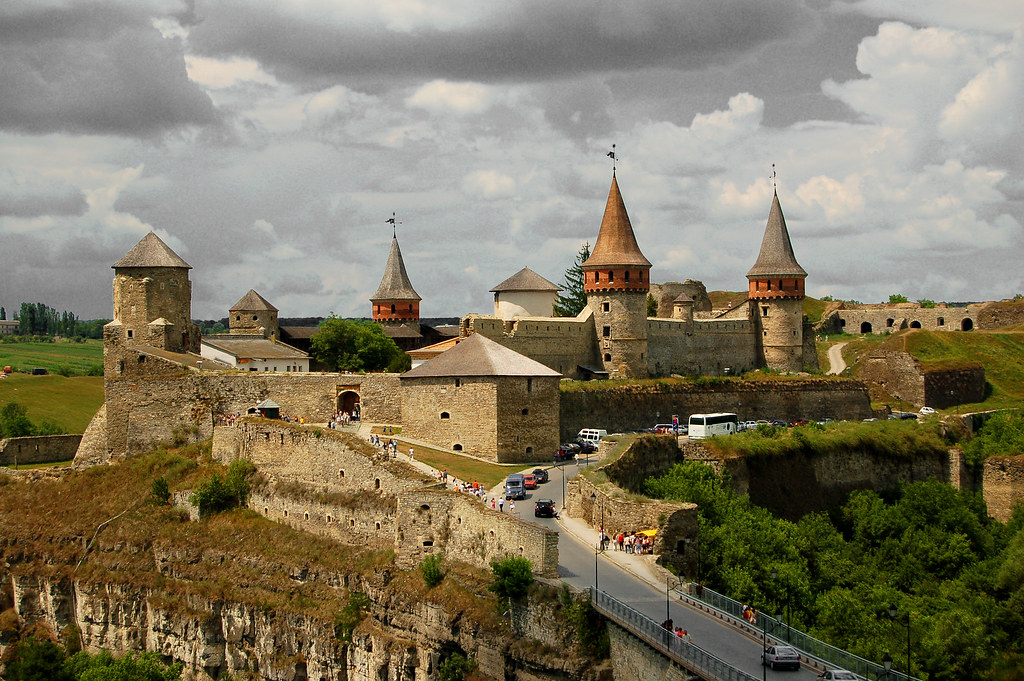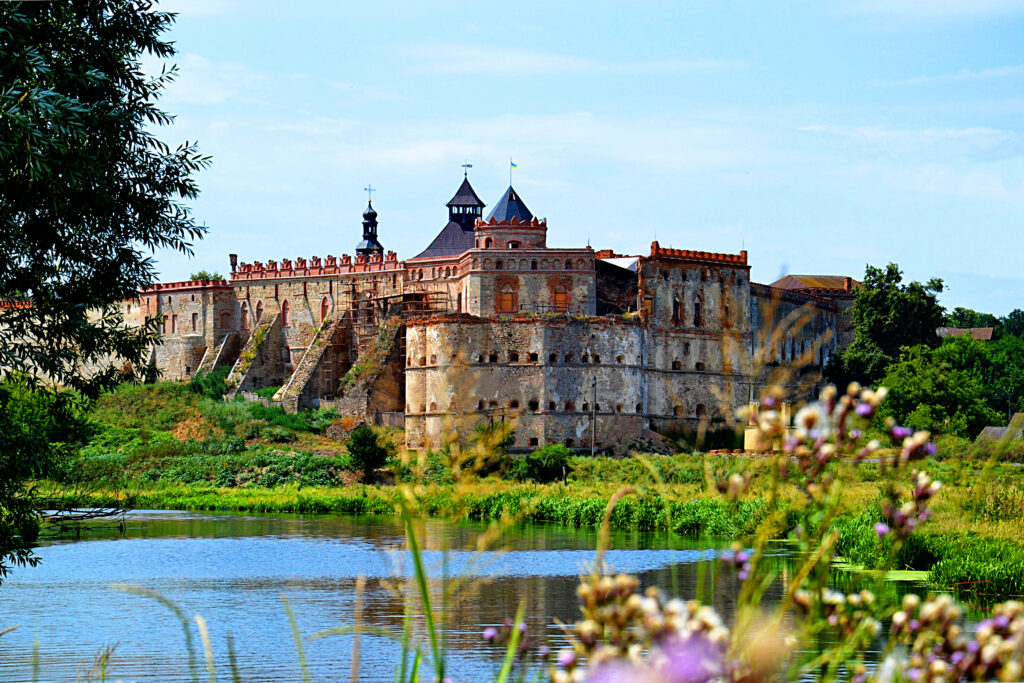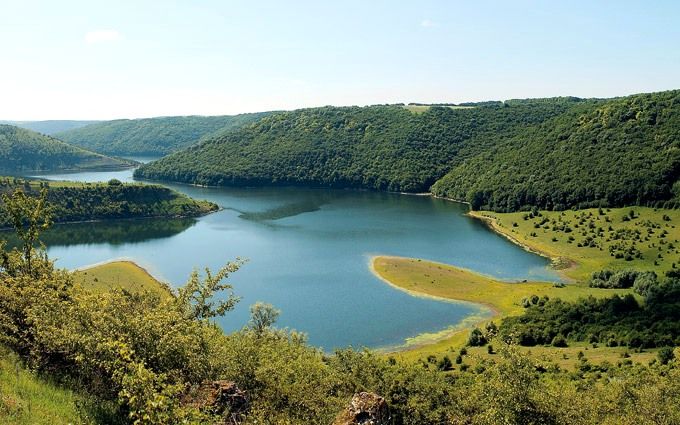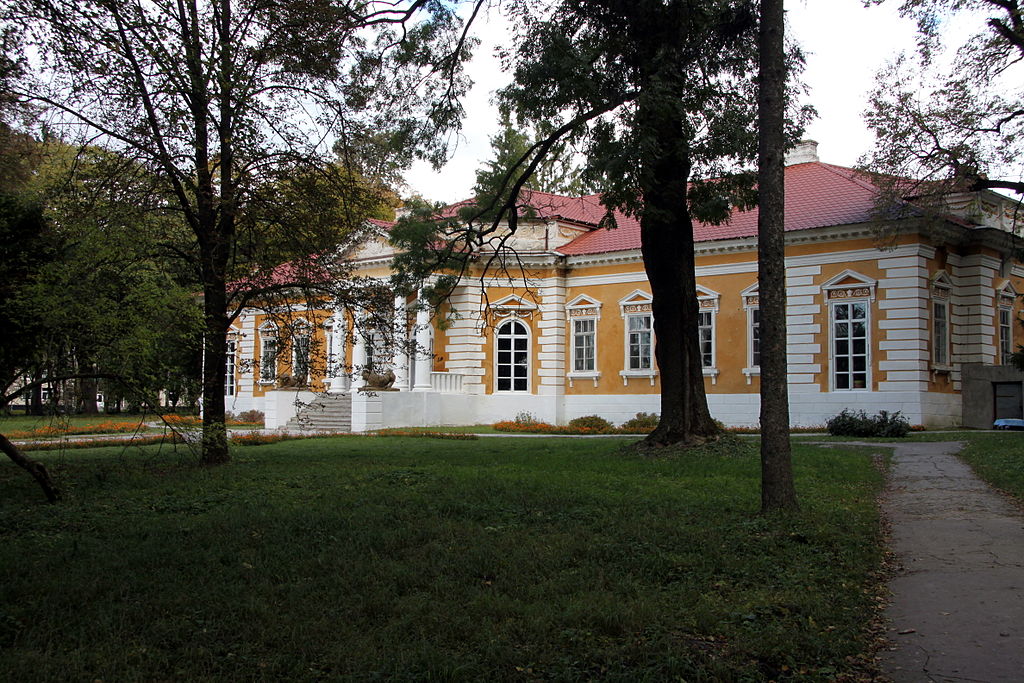Khmelnytskyi Oblast is associated with a historical region of Podolia, yet in reality its territory is split almost in half, the northern in Volhynia, and the southern in Podolia. Its Volhynian region contains smaller cities like Izyaslav, Starokostiantyniv, Shepetivka, while its Podolian portion more developed cities of Khmelnytskyi and Kamianets-Podilskyi.
In addition to its natural wonders, Podolia is historically significant, as it is believed that human habitation of the area goes back to the beginning of the Neolithic period (9500BC). Remnants of what has come to be known as Trajan’s Wall have been found in the area.
Khmelnytskyi Region was originally created on September 22, 1937 as the Kamianets-Podilskyi Oblast out of border okrugs [administrative divisions] of the Prokuriv and Kamianets-Podilskyi regions of the Vinnytsia Oblast. In 1941–44 it was under Nazi Germany occupation and part of the Reichskommissariat Ukraine until the spring of 1944 when the Soviets took control.
Until 4 February 1954 it was called Kamianets-Podilsky Oblast centered in Kamianets-Podilsky after which it was re-branded as Khmelnytskyi Oblast after Cossack Hetman Zynoviy Bohdan Khmelnytsky.
Khmelnytskyi Oblast is rich in medieval monuments to military defense, religious architecture, and palaces of the aristocracy including:
 Kamianets- Podilskyi Castle is a former Ruthenian-Lithuanian castle and a later three-part Polish fortress located in the historic city of Kamianets-Podilskyi, Ukraine, in the historic region of Podolia in the western part of the country. Its name is attributed to the root word kamin’, from the Slavic word for “stone”. The castle sits on top of a peninsula carved out by the winding Smotrych River, forming a natural defense system for Kamianets-Podilskyi’s historic Old Town neighborhood. Its location on a strategic transport crossroad in Podolia made the castle a prime target for foreign invaders, who rebuilt the castle to suit their own needs, adding to its multicultural architectural diversity. The castle still forms a coherent architectural design, being one of the few medieval steructures in modern-day Ukraine that is relatively well preserved.
Kamianets- Podilskyi Castle is a former Ruthenian-Lithuanian castle and a later three-part Polish fortress located in the historic city of Kamianets-Podilskyi, Ukraine, in the historic region of Podolia in the western part of the country. Its name is attributed to the root word kamin’, from the Slavic word for “stone”. The castle sits on top of a peninsula carved out by the winding Smotrych River, forming a natural defense system for Kamianets-Podilskyi’s historic Old Town neighborhood. Its location on a strategic transport crossroad in Podolia made the castle a prime target for foreign invaders, who rebuilt the castle to suit their own needs, adding to its multicultural architectural diversity. The castle still forms a coherent architectural design, being one of the few medieval steructures in modern-day Ukraine that is relatively well preserved.
The complex is a candidate UNESCO World Heritage Site, nominated in 1989 by the Ukrainian representatives, and is also one of the Seven Wonders of Ukraine. Today, Kamianets-Podilskyi Castle is the most recognized landmark of the city, serving as an important regional and national tourist attraction.

Medzhybizh. Medzhybizh was once a prominent town in the former Podolia Province. Its name is derived from “mezhbuzhye”, which means “between the Buzhenka and the Buh Rivers” and is known as the birthplace of the Jewish Hasidic mystical religious movement. Medzhybizh is first mentioned in 12th Century chronicles as an estate in Kievan Rus.
In the mid-14th century the Mongols destroyed a wooden fortress that stood there and throughout the 15th through 17th centuries the town suffered from numerous attacks by the Turks. In the early 16th century a dam was built across the Southern Bug river to provide a defensive lake, and a rhomboid fortress was built that became known as Medzhybizh Castle. The state-of-the-art fortifications made Medzhybizh one of the strongest military sites in the region and led to the rise of its prosperity for the next three centuries. By the mid-18th century, Medzhybizh was the seat of power in Podilia Province and had a population of nearly 5,000 of which there were 2,500 Jews.
A large museum in memory of the victims of the Holodomor is located in the fortress. There is a number of expositions available to visitors explaining the tragic events of 1930–1932 and the castle houses a small museum devoted to the Ukrainian history of the town
 Podilski Tovtry National Nature Park is a national park, located in Khmelnytskyi and Kamianets-Podilskyi Raions of Khmelnytskyi Oblast in the southern region of the western Ukraine.
Podilski Tovtry National Nature Park is a national park, located in Khmelnytskyi and Kamianets-Podilskyi Raions of Khmelnytskyi Oblast in the southern region of the western Ukraine.
It is the largest nature conservation area in Ukraine and is specifically renowned for the beautiful Tovtorovyi [Tovtry] Ridge of Podillya.
The Tovtry is a limestone barrier reef from the Miocene Sea, a remnant of costal reefs that stretched parallel to its ancient coastal line.

Samchyky Estate located in the village of Samchyky in the Starokostiantyniv district is one of the most remarkable places in Ukraine, since its buildings, architecture and interiors have retained their original appearance of the 19th century.
An elegant palace and a complex of outbuildings, including the Chinese pavilion with a pagoda roof, are located in a park by the lake. Since the 19th century, this place has been known as given the name “Ukrainian Versailles”.
If you’ve got any questions, please do not hesitate to call, text or email us. We’re here to help you.
+380 (50) 242 75 54 dborysenko@gmail.com
ancestry@ukrainian-ancestry.com